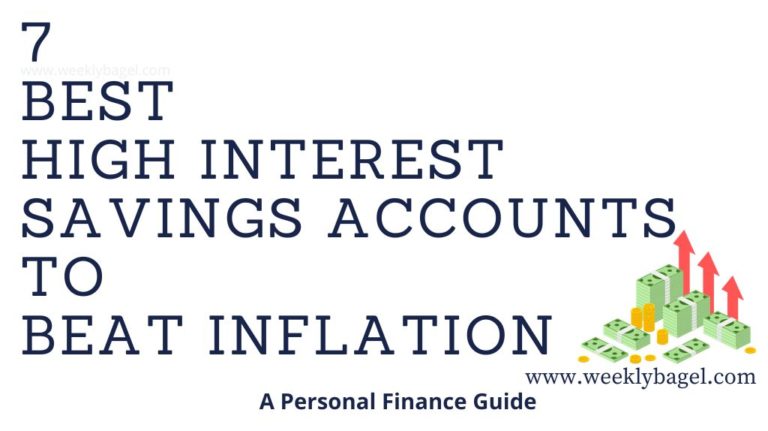High-interest checking accounts that beat inflation
 High-Interest Checking Accounts That Beat Inflation
High-Interest Checking Accounts That Beat Inflation
Checking accounts offering interest rates exceeding the current inflation rate represent a valuable tool for preserving and growing savings. These accounts provide a readily accessible alternative to traditional savings accounts or low-yield investment options, allowing individuals to maintain liquidity while earning a return that outpaces the erosion of purchasing power caused by inflation. A concrete example would be an account offering a 5% annual percentage yield (APY) in an environment where inflation is at 3%. The extra 2% represents a real gain in purchasing power.
Historically, periods of high inflation have underscored the importance of accounts providing returns above the inflation rate. During such periods, the purchasing power of money held in low-yield or non-interest-bearing accounts diminishes considerably. Accounts that outpace inflation protect savings from this erosion, maintaining their real value over time. The benefits are significant, including enhanced savings growth, increased financial security, and a hedge against economic uncertainty. This article will explore strategies for identifying and maximizing the potential of these accounts.
The following sections will delve into frequently asked questions, practical tips, and a concluding overview to provide a comprehensive understanding of this financial strategy.

FAQs about High-Interest Checking Accounts That Beat Inflation
This section addresses common questions and misconceptions surrounding checking accounts that offer returns exceeding inflation.
Question 1: How can I find high-yield checking accounts?
Numerous online banks and credit unions offer competitive interest rates on checking accounts. Regularly comparing rates from different institutions is crucial, as offers vary significantly. Utilize online comparison tools and check the fine print for any associated fees or minimum balance requirements that might offset the interest earned.
Question 2: Are there any risks associated with these accounts?
While generally safe, risks exist. Interest rates can fluctuate, potentially decreasing below the inflation rate. Furthermore, certain accounts might impose fees for insufficient balances or require minimum deposit amounts. It is important to assess all terms and conditions before opening an account.
Question 3: What is the difference between APY and APR?
APY (Annual Percentage Yield) represents the total amount of interest earned in a year, taking into account the effect of compounding. APR (Annual Percentage Rate) is the basic interest rate, without considering compounding. For accurate comparisons, always focus on the APY figure.
Question 4: How do I maximize returns?
Maximize returns by maintaining the minimum balance required to avoid fees, if applicable. Consider consolidating funds from multiple low-yield accounts into a single high-yield account. Regularly review and compare rates offered by different financial institutions to identify the best opportunities.
Question 5: What if inflation increases unexpectedly?
Unforeseen inflation increases present a challenge. Actively monitoring inflation rates and interest rates is critical. If the interest rate drops significantly below inflation, explore alternative investment options, though maintaining liquidity might necessitate a compromise on returns.
Question 6: Are there any tax implications?
Interest earned on checking accounts is generally taxable income. Consult a financial advisor or tax professional for personalized advice based on individual circumstances and tax brackets.
Understanding these aspects helps in making informed decisions regarding high-yield checking accounts.
Tips for High-Interest Checking Accounts That Beat Inflation
These strategies enhance the effectiveness of utilizing accounts that offer returns above the inflation rate.
Tip 1: Regularly Compare Rates: Interest rates constantly fluctuate. Periodically review offers from different banks and credit unions to ensure your account remains competitive.
Tip 2: Understand Fees: Scrutinize account fees. High interest may be offset by maintenance fees, overdraft charges, or minimum balance requirements.
Tip 3: Utilize Online Banks: Online banks often offer more competitive interest rates than traditional brick-and-mortar institutions due to lower overhead costs.
Tip 4: Consider Credit Unions: Credit unions frequently offer favorable rates and member benefits, providing another option to explore.
Tip 5: Automate Savings: Set up automatic transfers from your primary account to your high-yield checking account to consistently build savings.
Tip 6: Monitor Inflation: Keep track of inflation rates to gauge the effectiveness of your chosen account's interest rate relative to the erosion of purchasing power.
Tip 7: Diversify Savings: While high-yield checking is useful for liquidity, consider diversifying your savings into other investment vehicles suitable to your risk tolerance.
Implementing these tips can help optimize your strategy for maximizing returns and mitigating risks.
Conclusion on High-Interest Checking Accounts That Beat Inflation
This exploration has highlighted the significance of checking accounts offering interest rates that outpace inflation as a crucial tool for financial preservation and growth. The benefits extend beyond merely earning interest; they include safeguarding savings from the effects of inflation and maintaining readily accessible funds.
Careful consideration of factors such as interest rate fluctuations, associated fees, and alternative investment options is paramount. Proactive monitoring of the financial landscape, coupled with diligent comparison shopping, will enable individuals to optimize their strategy for securing financial well-being in a dynamic economic environment. Regularly reviewing and adapting the approach will remain crucial in successfully navigating changing market conditions and maximizing returns.

Published on: 2025-04-11T12:46:07.000Z
